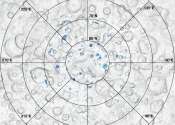New Eocene fossil data suggest climate models may underestimate future polar warming
A new international analysis of marine fossils shows that warming of the polar oceans during the Eocene, a greenhouse period that provides a glimpse of Earth's potential future climate, was greater than previously thought.









